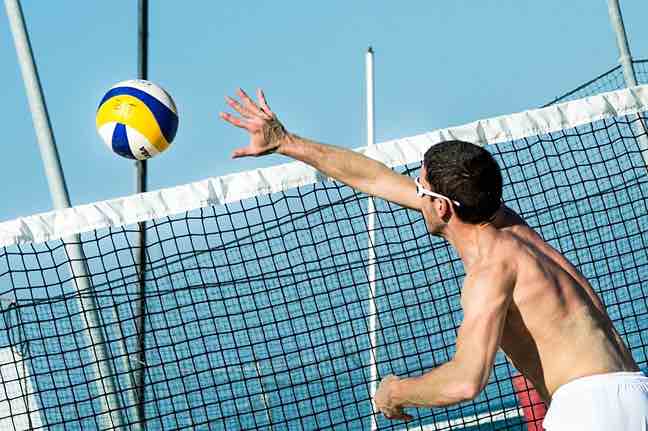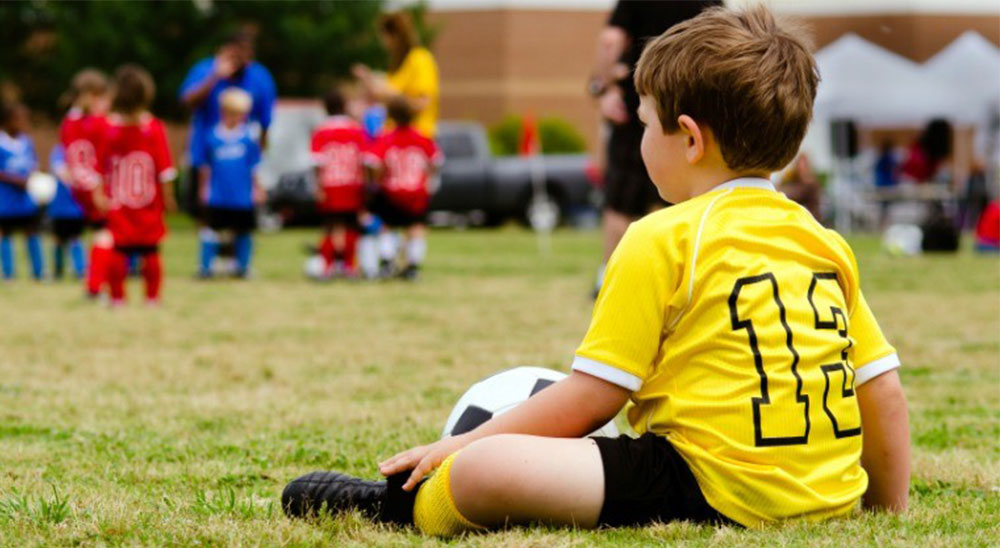
Engaging in physical activities is not just about pushing your limits; it’s about finding joy and ease in movements that benefit both mind and body. For many, the world of sports can seem daunting due to perceived complexities and demands. However, easy sports offer a welcoming gateway, requiring minimal equipment and basic skills, making them the perfect starting point for beginners of all ages.
Easy sports, often labeled as the easiest sport options, are designed to be accessible and inclusive. Whether it’s the simple joy of tossing a frisbee in the park or the shared excitement of a community kickball game, these activities eliminate the barriers of rigorous training and expensive gear. They not only foster a sense of community and belonging but also serve as a stepping stone to more structured physical endeavors.
Starting with an easy sport can significantly reduce the intimidation factor, allowing individuals to focus on the fun and social aspects of sports. This approach nurtures a lifelong appreciation for physical activity, setting a foundation of healthy habits that can evolve with one’s interests and abilities. By emphasizing enjoyment over competition, easy sports can transform the way we think about fitness and well-being, making it a natural part of our daily lives.
What makes a sport “easy”?
When considering what qualifies as an easy sport, the focus often shifts to accessibility and simplicity. An easy sport is typically defined by its low barrier to entry and the minimal requirements needed to participate. This simplicity makes certain sports more approachable and enjoyable for beginners and those looking for casual recreational activities.
The criteria for classifying a sport as easy include:
- Minimal Equipment: The less gear and equipment required, the easier it is to get started. Sports like running and soccer fall into this category, where basic footwear and a ball respectively are the primary requirements. This not only makes these sports financially accessible but also less cumbersome to organize.
- Simple Rules: Sports that are easy to understand and play typically have straightforward rules. Games like frisbee and volleyball have simple objectives that are quick to learn, which reduces the time spent learning and increases the time spent playing.
- Low Physical Demand: While all sports can offer a good workout, easy sports do not require extensive physical exertion or advanced athletic skills. This makes activities like swimming and cycling popular among people of all ages and fitness levels.
- High Flexibility and Adaptability: Many easy sports can be played in various settings, from parks to backyards, and can be easily modified to suit different numbers of players and skill levels. For example, basketball can be played one-on-one or in teams, with full-court games or just shooting hoops.
- Community and Social Engagement: Sports that encourage participation and inclusion tend to be easier for people to try. They often support casual play, where the focus is on fun and social interaction rather than competition.
Understanding these factors helps clarify what is the easiest sport to start with. By prioritizing enjoyment and accessibility, easy sports can play a crucial role in promoting long-term health and well-being. Whether you’re a parent introducing your child to physical activities or an adult looking to stay active, choosing an easy sport can provide a fulfilling and stress-free way to engage with sports.

Top 10 easiest sports to play
Exploring physical activities that are accessible and enjoyable is crucial for maintaining a healthy lifestyle. Here’s a list of the top 10 easiest sports to play, each chosen for its minimal equipment requirements, simple rules, and accessibility to all age groups.
- Walking: Often overlooked as a sport, walking is arguably the ultimate easy sport. It requires no special equipment besides a pair of comfortable shoes, and you can do it anywhere, anytime.
- Running: Similar to walking, running is an easy sport that only requires good shoes. It’s excellent for cardiovascular health and can be as casual or as competitive as you like.
- Tag: Known for its simplicity and the minimal space required, tag is an engaging sport that improves agility and stamina. It’s perfect for all ages, making it a truly easy sport.
- Jump rope: This childhood favorite not only offers a great cardiovascular workout but also enhances coordination. A simple rope is all the equipment you need.
- Badminton: Often cited as an easy sport, badminton requires only rackets, a shuttlecock, and a net. It can be played in backyards, parks, or beaches and offers a moderate physical challenge.
- Volleyball: With just a ball and a net, volleyball can be played on sand, grass, or indoors. It’s a social sport that enhances teamwork and hand-eye coordination.
- Bowling: Accessible and popular among all age groups, bowling is a fun way to spend time with friends or family. The rules are straightforward, making it an easy sport to pick up.
- Frisbee: This low-intensity sport requires just a flying disc and can be played in parks or beaches. It’s great for improving hand-eye coordination and can be as relaxed or as competitive as desired.
- Table tennis: Known for its fast-paced but easy-to-learn gameplay, table tennis requires minimal space and equipment, making it an ideal easy sport for indoor play.
- Hula hooping: Beyond being a fun activity, hula hooping can be an excellent workout for the core muscles. All you need is a hoop and some space to start spinning.
Each of these sports is easy to begin, requiring little to no initial investment, making them perfect for those looking to ease into a more active lifestyle. Whether solo or in groups, these sports provide various benefits while ensuring that everyone can participate, regardless of skill level.

Benefits of engaging in easy sports
Participating in easy sports provides numerous benefits that extend beyond simple physical fitness, impacting mental health and social well-being profoundly. These activities, recognized for their accessibility and simplicity, offer a unique blend of advantages that cater to all ages and skill levels.
Physical Health Benefits: Engaging in easy sports helps maintain a healthy body weight, improves cardiovascular health, and increases muscle tone without the intensity often associated with traditional sports. Activities like walking, swimming, or cycling at a leisurely pace promote endurance and flexibility, making them suitable for everyone, especially those new to physical activities. These sports also provide a gentle yet effective way to manage or prevent chronic conditions such as hypertension, diabetes, and osteoporosis.
Mental Health Benefits: Easy sports play a crucial role in enhancing mental health. The simplicity and repetitive nature of activities like jogging or yoga can serve as a form of moving meditation, reducing stress and anxiety. Regular participation helps to release endorphins, often referred to as the body’s natural mood elevators, which can alleviate symptoms of depression and enhance overall mood stability.
Social Benefits: The inclusive nature of easy sports fosters community and connection. These activities often require minimal equipment and can be played in various settings, encouraging social interaction and teamwork. From casual games in the park to community swimming sessions, they provide a platform for social engagement, strengthening community ties and building friendships. Furthermore, participating in group sports enhances communication skills and offers a supportive environment where individuals can feel a sense of belonging and achievement.
How to get started with easy sports
Embarking on a journey into easy sports can be both exciting and rewarding. Here are practical tips on choosing the right sport and finding local clubs or groups to help you get started:
- Assess Your Interests: Think about what you enjoy doing. If you love being outdoors, consider sports like jogging or frisbee. For those who prefer indoor activities, bowling or table tennis might be appealing. Matching your interests to the activity can keep you motivated.
- Consider Your Physical Condition: Not all sports are suitable for everyone. If you have any physical limitations, choose sports easy on the body, like swimming or cycling, which offer low impact alternatives but provide excellent cardiovascular benefits.
- Research Equipment Needs: One of the advantages of easy sports is their minimal equipment requirements. Look for sports that don’t require a significant investment. Sports like running only require good shoes, and yoga can be practiced with just a mat.
- Find Local Clubs and Groups: Check local community centers, sports clubs, and online platforms for groups that engage in the easy sport of your choice. Sites like Meetup.com can be great for finding local sports groups.
- Attend Introductory Sessions: Many clubs offer free trials or beginner sessions. These are great opportunities to try out a sport without commitment and to gauge your interest and comfort level.
- Start at Your Own Pace: Begin with low intensity and gradually increase your involvement as your skill and confidence grow. This approach helps prevent injuries and builds a sustainable habit.
- Engage Socially: Sports are a fantastic way to meet new people and make friends. Joining a team or attending social sports events can enhance your enjoyment and commitment.
By following these steps, you can successfully integrate easy sports into your lifestyle, benefiting from both their physical and social advantages. Enjoy the process of exploring new activities that can enrich your life in simple and joyful ways.

Adapting straightforward sports for different age groups and skill levels
Adapting straightforward sports for various age groups and skill levels is crucial in fostering a lifelong engagement with physical activity. By tailoring sports to meet the diverse needs of children, adults, and seniors, educators and trainers can create inclusive and enjoyable experiences that promote health and social interaction.
For children, the focus should be on fun, building basic motor skills, and social development. Games like tag, dodgeball, and simple relay races can be adapted with softer balls and smaller playing fields to ensure safety and encourage participation. It’s important to use equipment that matches the child’s size and strength, making the easiest sports not only fun but also accessible.
Adults might seek straightforward sports that require minimal equipment and preparation to fit into their busy schedules. Sports like walking football, basketball, or group fitness classes can be scaled in intensity to suit beginners and those looking for a more relaxed approach to staying active. These activities provide an excellent outlet for stress, and by incorporating moderate challenges, they help adults improve their fitness levels comfortably.
For seniors, adapting sports involves prioritizing safety and the maintenance of physical health. Activities like tai chi, water aerobics, and bowling are perfect as they offer low-impact, high-reward opportunities to stay active. For these adaptations, ensure that the playing surfaces are safe and that there’s ample support available, like modified equipment and extra seating for rest.
Educators and trainers looking to incorporate these easy sports into their programs should consider the following tips:
- Use adjustable equipment that can be customized to individual needs and abilities.
- Ensure clear, simple instructions are provided, possibly supplemented with demonstrations.
- Foster a supportive environment that emphasizes personal progress and group cooperation rather than competition.
- Regularly rotate activities to maintain interest and challenge participants in new, fun ways.
By considering these adaptations and tips, straightforward sports can become a gateway to improved physical health and social well-being for all age groups.
Spotlight on community success stories
The transformative power of easy sports extends far beyond individual benefits, influencing entire communities with their inclusive and accessible nature. In Jacksonville, Florida, a local community center initiated a kickball league that quickly became a neighborhood sensation, bringing together people of all ages and backgrounds. One participant, Maria, shared, “Kickball nights are the highlight of our week. It’s simple, fun, and we’ve made friends for life.”
Similarly, in a small town in Yorkshire, England, the introduction of community badminton sessions in the local gym has seen remarkable participation. John, a retired teacher who organizes the sessions, noted, “Badminton is easy to set up and play. We’ve seen people from 8 to 80 join in, and it’s fantastic to see such a mix of ages and skill levels.”
The stories of these communities highlight the essence of easy sports: the ability to unite and energize. According to a study published by a local university, participation in these sports not only improved physical health but also significantly boosted community morale and social cohesion.
Moreover, in Denver, Colorado, a group of parents came together to form a Frisbee league aimed at providing a relaxed and engaging sport for their children and themselves. “It’s amazing how a simple game of Frisbee can bring us all together. The kids love it, and so do we,” commented Sarah, one of the founding members.
Embracing the simplicity of easy sports
Throughout this exploration of sports, we’ve uncovered the undeniable benefits and accessible nature of engaging in activities that don’t demand much in terms of equipment or advanced skills. Easiest sports serve not just as a form of physical exercise but as a bridge to a healthier, more active lifestyle for people of all ages and backgrounds.
These activities, labeled as the easiest sport options, ensure that anyone can start playing with minimal preparation. From walking and table tennis to group sports like volleyball, the barrier to entry is low, but the rewards in physical health and social interaction are high. This inclusivity is paramount, making sports participation possible for those who might feel intimidated by more complex or demanding sports.
Moreover, the simplicity of sports often leads to a greater enjoyment and a consistent exercise routine, crucial for building lifelong healthy habits. They offer a fun way to stay active, meet new people, and reduce stress without the pressures of intense competition.
